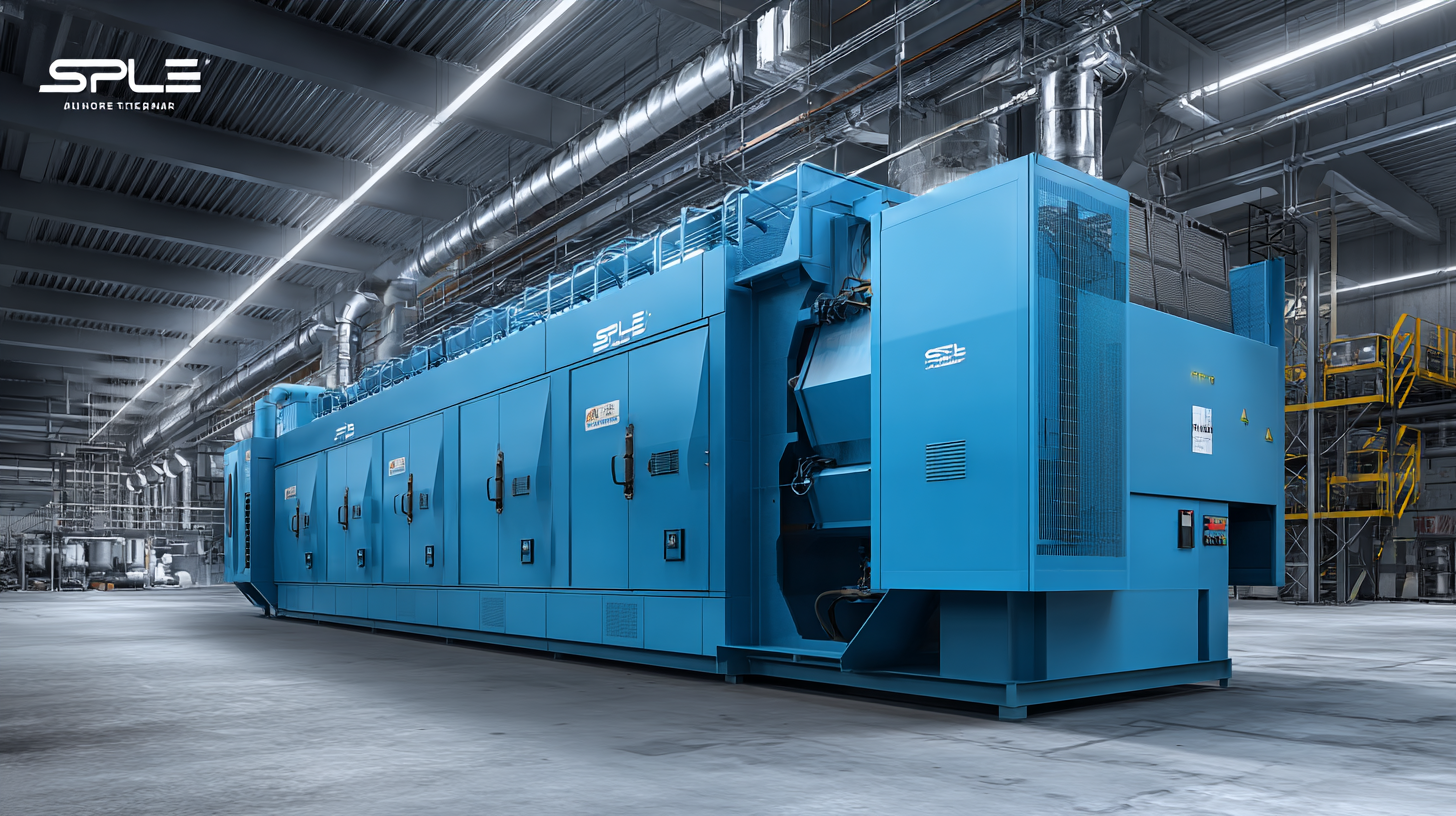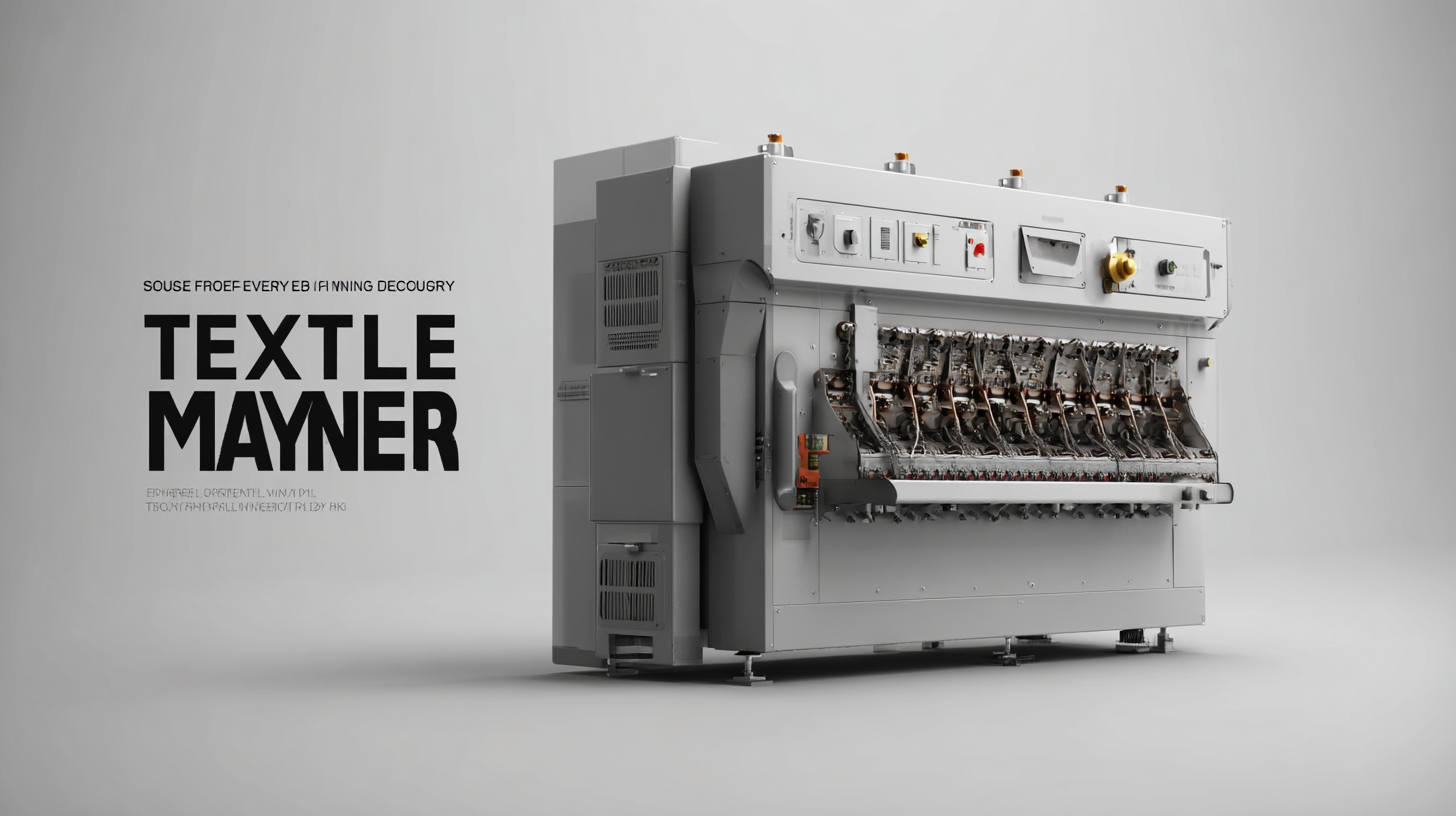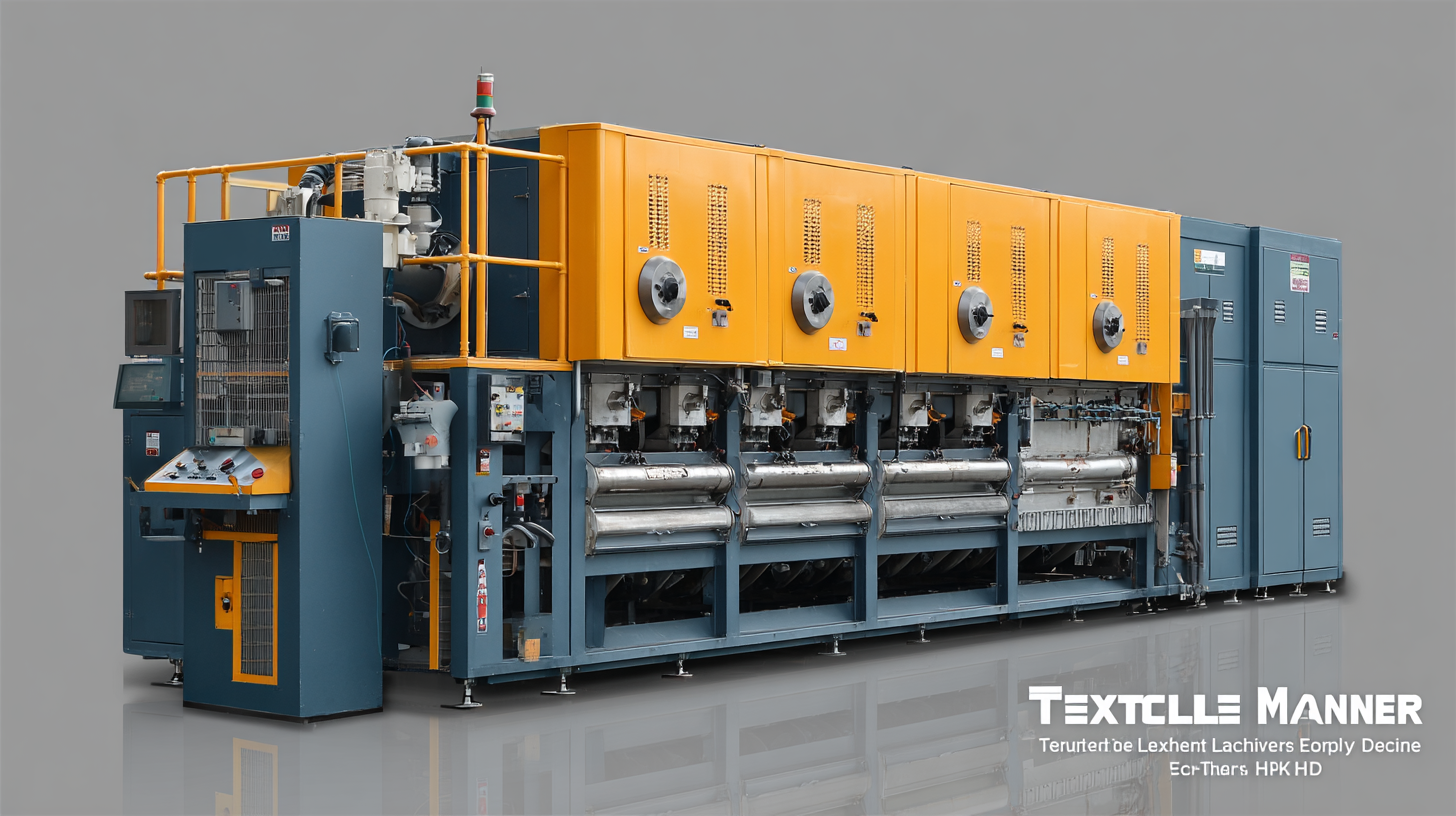Leave Your Message
In the ever-evolving textile industry, efficiency and performance are paramount, and one key player in achieving these goals is the Textile Dryer Machine. According to a report by MarketsandMarkets, the global textile machinery market is projected to reach USD 25 billion by 2026, with drying equipment playing a crucial role in this growth.

A well-functioning Textile Dryer Machine not only streamlines the drying process but also significantly reduces energy consumption, leading to substantial cost savings. Furthermore, advancements in technology have introduced innovative features that enhance drying efficiency, reduce lead times, and improve product quality.
As manufacturers look to optimize their production lines, investing in the best textile dryer machines is becoming increasingly essential for staying competitive in the market and meeting high customer demands.
When it comes to revolutionizing textile drying, traditional machines often fall short in terms of energy efficiency and drying speed. Innovative alternatives are emerging that not only reduce energy consumption but also enhance the overall drying process. For instance, technology such as infrared dryers utilizes radiant heat, which heats the fabric directly rather than the surrounding air, allowing for quicker and more uniform drying. This method significantly cuts down drying time while retaining the fabric's integrity, making it a preferred choice for modern textile manufacturers.
Another promising alternative is the use of vacuum drying systems. By lowering the pressure in the drying chamber, these machines can evaporate moisture from textiles at lower temperatures, reducing the risk of fabric damage and color fading. Additionally, they consume less energy compared to traditional dryers, making them an eco-friendly option as well. As the apparel industry becomes increasingly focused on sustainability, the incorporation of these innovative drying technologies presents a compelling solution for businesses looking to boost efficiency and reduce their environmental footprint.
| Dryer Type | Energy Efficiency Rating | Drying Time (minutes) | Capacity (kg) | Features |
|---|---|---|---|---|
| Heat Pump Dryer | A++ | 70 | 9 | Low Noise, Auto Cleaning |
| Condensation Dryer | B | 60 | 8 | Sensor Drying, Digital Display |
| Airflow Dryer | A | 45 | 15 | Fast Drying, Compact Design |
| Industrial Tumble Dryer | C | 120 | 30 | High Capacity, Robust Build |
In the quest for efficiency in textile drying, energy-saving features of modern machines have become paramount. As the textile industry shifts towards sustainable practices, the integration of advanced technologies in dryer machines significantly reduces energy consumption. For instance, using heat pump technology in dryer systems can cut energy use by nearly 50% compared to traditional dryers. This innovation not only enhances operational efficiency but also aligns with the global push for green production methods in textiles.
Moreover, recent advancements in next-generation textiles (NGTs) showcase the importance of adopting eco-friendly technologies alongside energy-efficient drying solutions. According to recent industry reports, sustainable dyeing and finishing methods contribute to less water and energy wastage, thus enhancing the overall lifecycle of textile products. By embracing automated systems with smart energy management capabilities, manufacturers can lower their carbon footprint while still delivering high-quality results. The combination of these innovative drying technologies and sustainable practices stands as a testament to the industry's commitment to a more environmentally responsible future.
When choosing between electric and gas textile dryers, understanding their operational efficiencies is crucial. Recent studies indicate that gas dryers generally have faster drying times due to higher heat output, making them more efficient for larger-scale operations. For instance, a simulation of household gas clothes dryers highlighted their superior performance in heat and mass transfer processes, achieving an energy efficiency rate of approximately 25% higher than that of electric dryers under similar conditions. Additionally, an overview of energy consumption in the global textile industry indicates that implementing gas technology can significantly lower operational costs in the long run.
Tips: When selecting a dryer, consider the specific needs of your operations. Gas dryers may require a higher initial investment and installation of venting systems, while electric dryers necessitate more frequent energy source reviews. Evaluating the local energy costs can provide insights into the best long-term choice for your facility. Furthermore, it's essential to stay informed about renewable energy implementations in textile manufacturing, as adopting cleaner technologies can enhance both efficiency and sustainability.
 Emerging technologies in textile drying are revolutionizing the way the industry approaches efficiency and sustainability. Traditional methods often consume extensive energy and water, leading to increased operational costs and environmental concerns. However, innovative textile dryer machines are now incorporating advanced features such as
heat recovery systems, which recycle hot air to reduce energy consumption significantly. This not only streamlines the drying process but also minimizes the carbon footprint of textile production.
Emerging technologies in textile drying are revolutionizing the way the industry approaches efficiency and sustainability. Traditional methods often consume extensive energy and water, leading to increased operational costs and environmental concerns. However, innovative textile dryer machines are now incorporating advanced features such as
heat recovery systems, which recycle hot air to reduce energy consumption significantly. This not only streamlines the drying process but also minimizes the carbon footprint of textile production.
Additionally, the integration of IoT (Internet of Things) technology is transforming textile drying operations. Smart dryer machines equipped with sensors can monitor humidity levels and adjust drying times automatically, ensuring that fabrics are dried to perfection without any risk of damage.
This precision not only improves the quality of the finished product but also reduces waste, making textile manufacturing more efficient. As these technologies continue to evolve, businesses have the opportunity to enhance their productivity while adhering to more sustainable practices, thus positioning themselves as leaders in a competitive market.
When evaluating textile dryer machines for cost-effectiveness, businesses must consider multiple factors, including initial investment, energy consumption, and maintenance costs. According to the “Global Textile Industry Report 2023,” energy-efficient dryers can reduce operational costs by up to 30%, enhancing long-term profitability. Additionally, investing in advanced technology such as heat pump dryers can lead to significant savings, with the potential for a return on investment in less than three years.

Tip: Before purchasing, conduct a lifecycle cost analysis to compare various models and their energy consumption rates. Opting for machines equipped with sensor technology can further optimize drying cycles, leading to reduced wear and tear on textiles and machines.
Moreover, businesses should examine the warranty and service options offered by manufacturers. A comprehensive service plan can minimize downtime and maintenance expenses. The same report suggests that frequent maintenance can extend the lifespan of dryers by up to 25%, making it a crucial consideration when assessing overall cost-effectiveness.
Tip: Consider modular dryers that allow for scalability. As production increases, businesses can upgrade their systems without the need for a complete overhaul, ensuring that costs remain manageable while accommodating growth.
